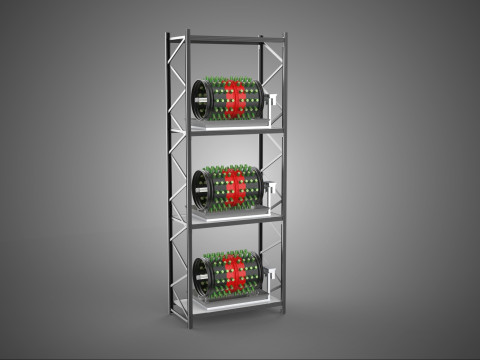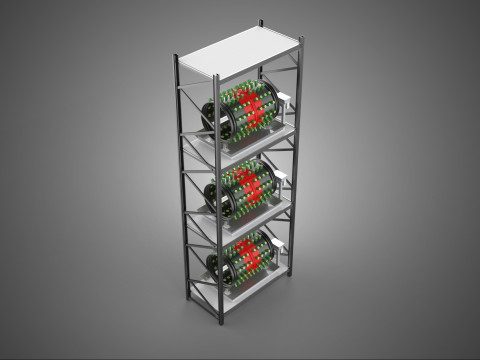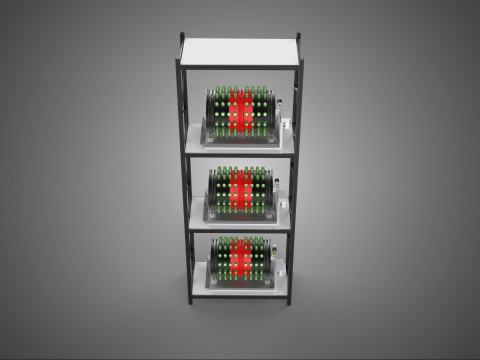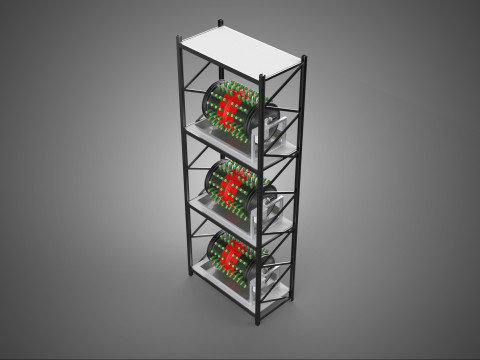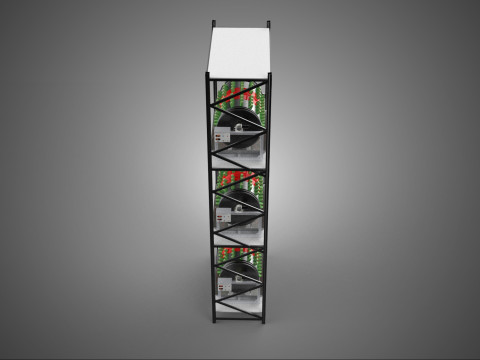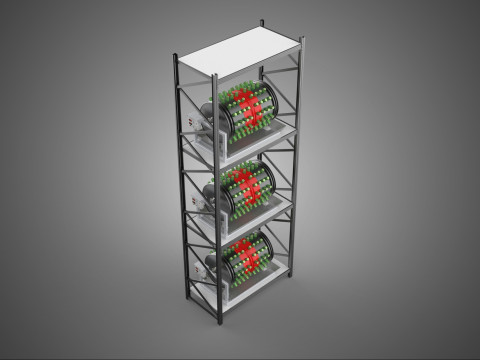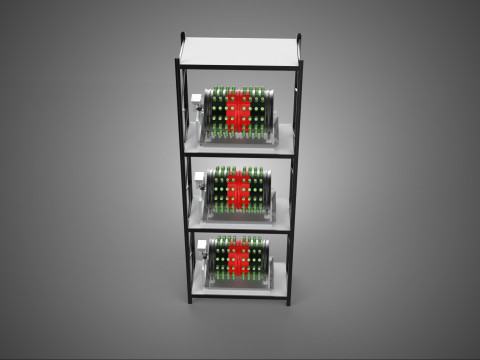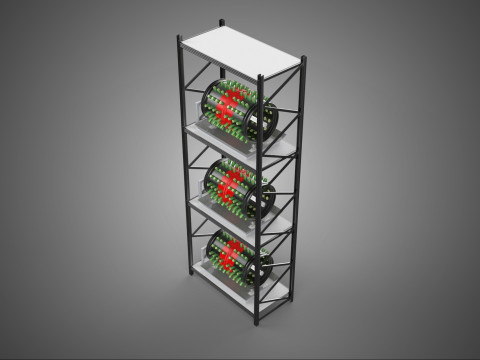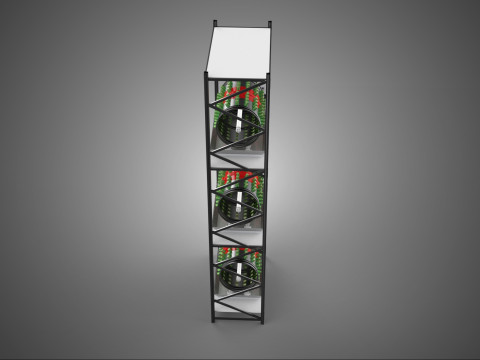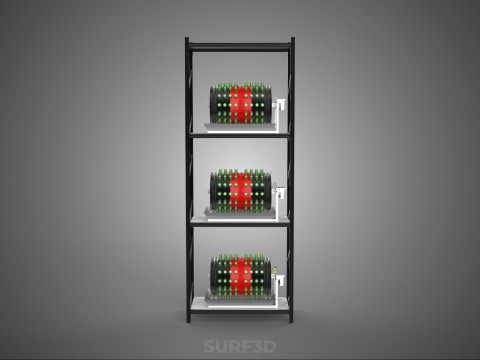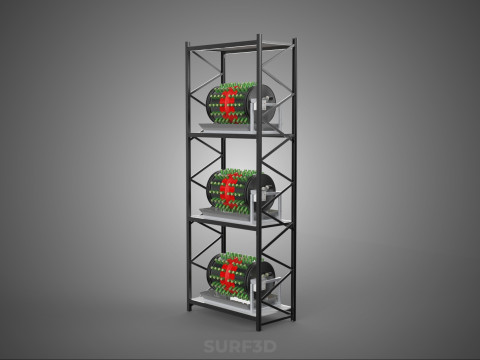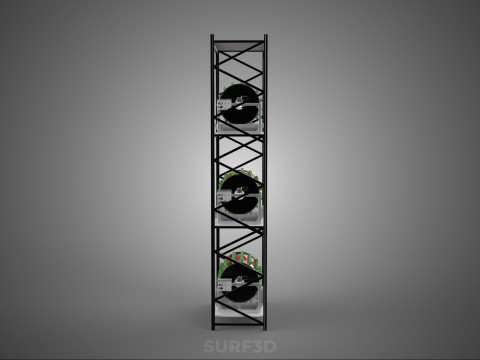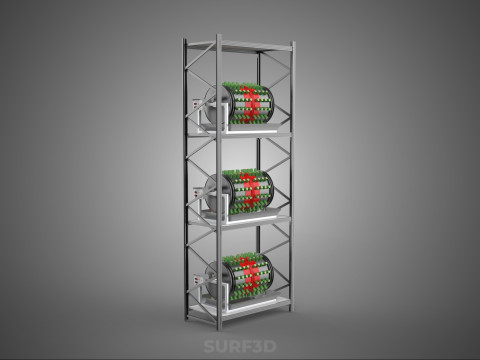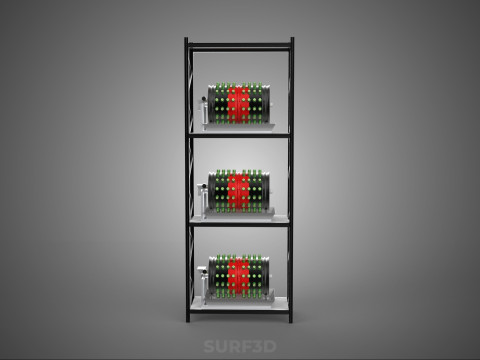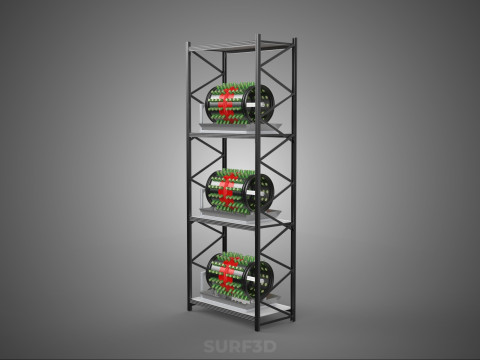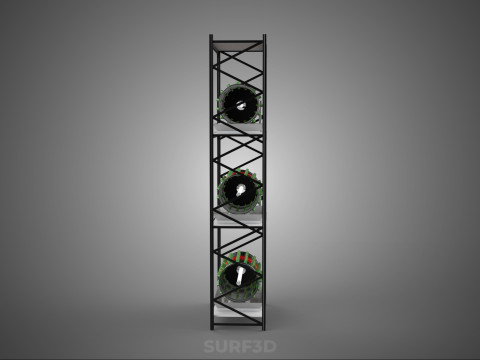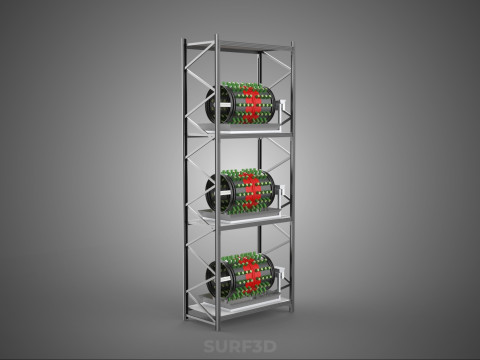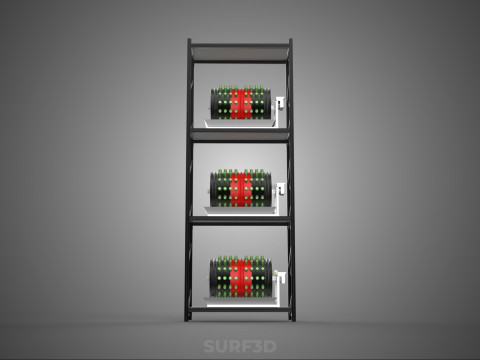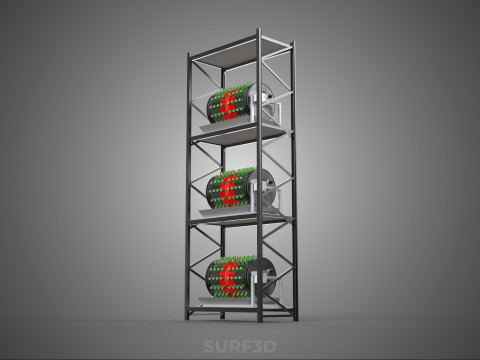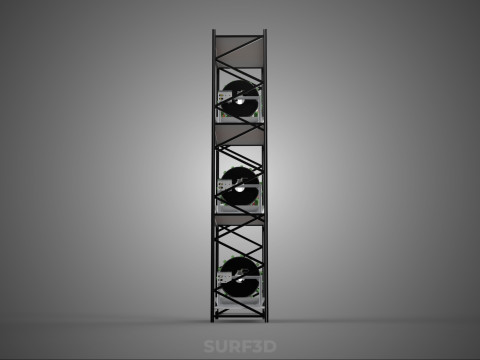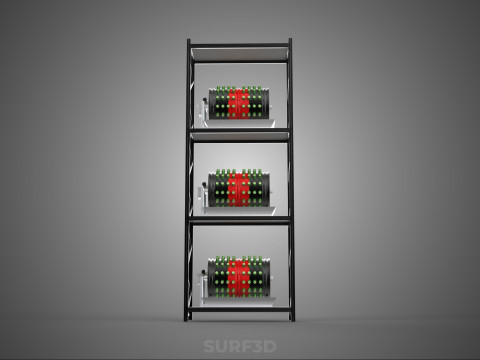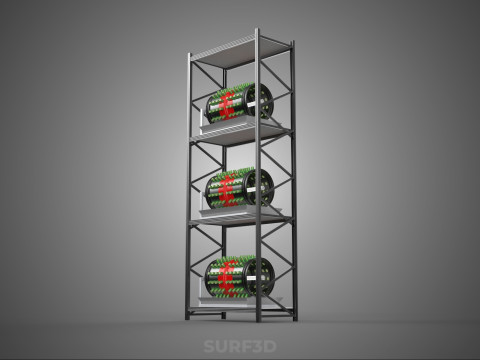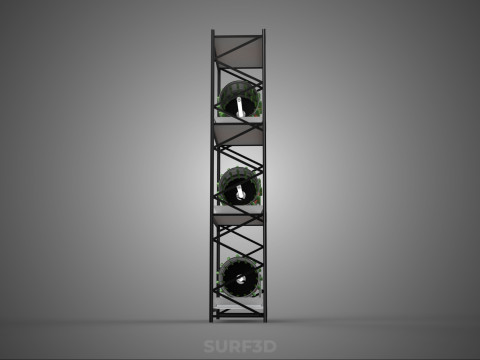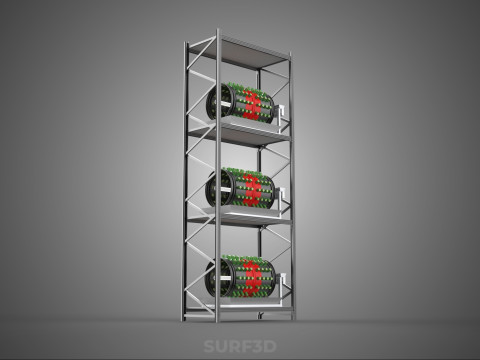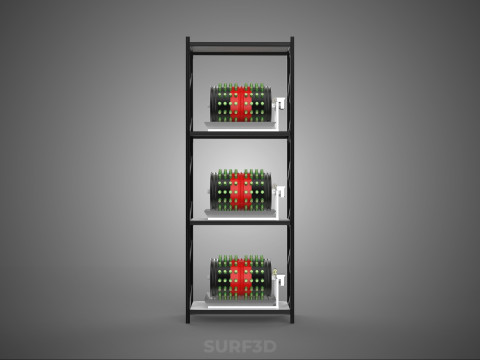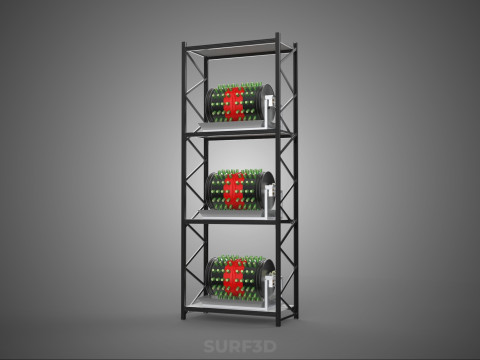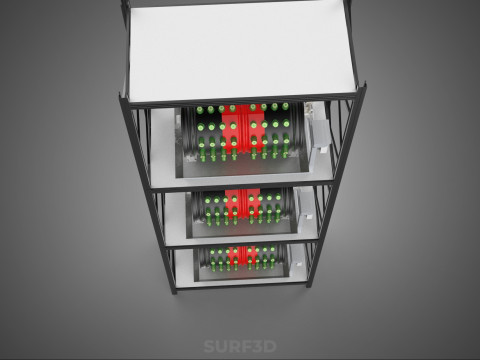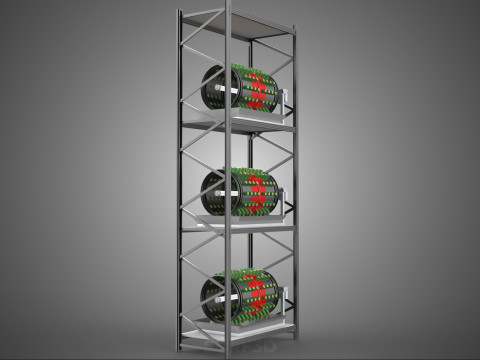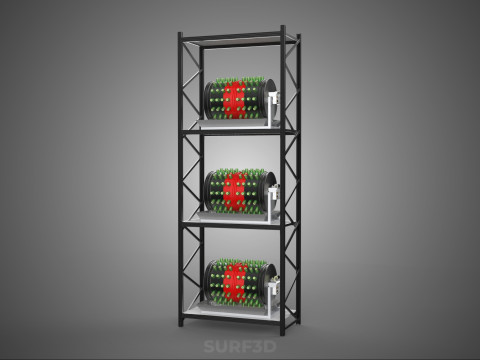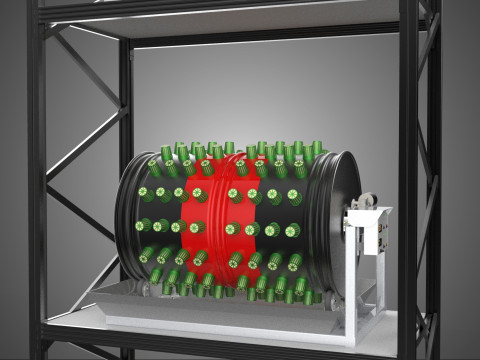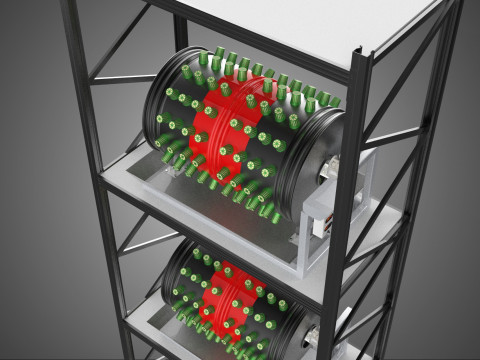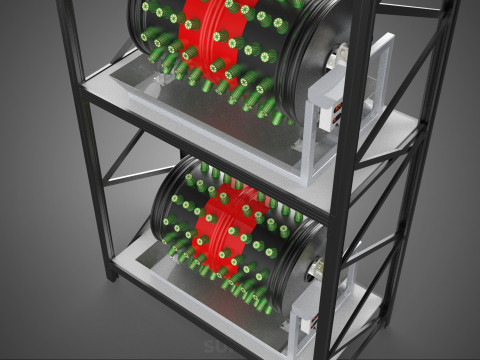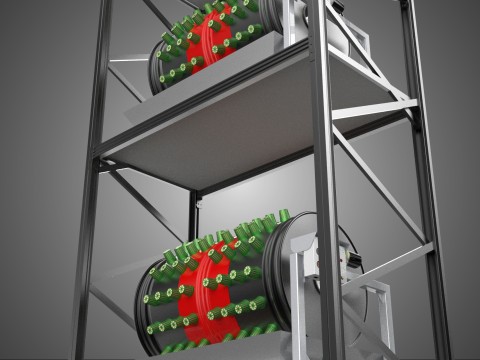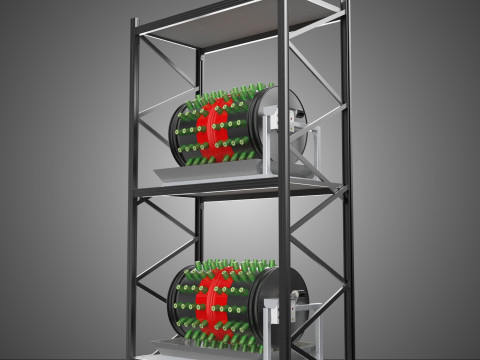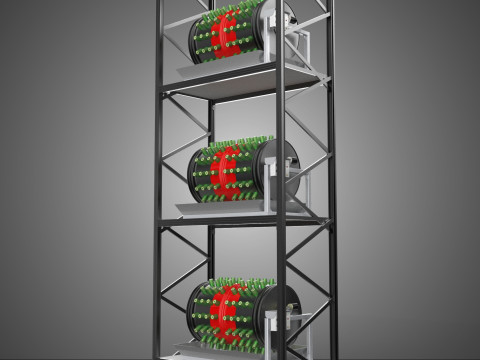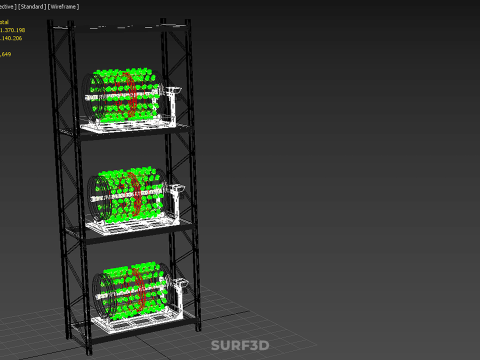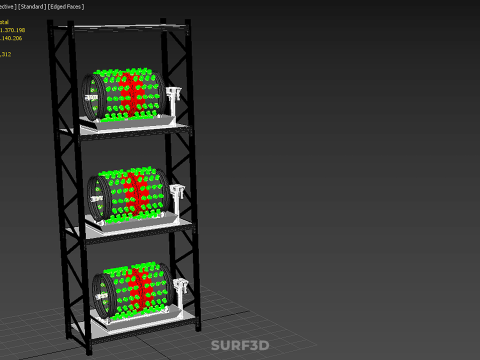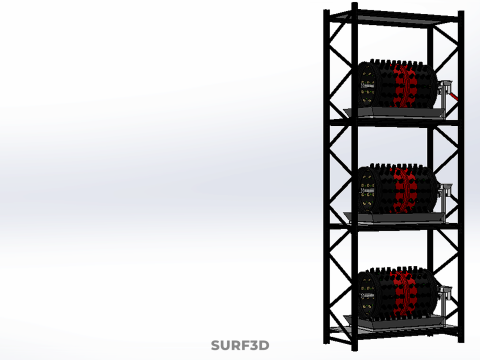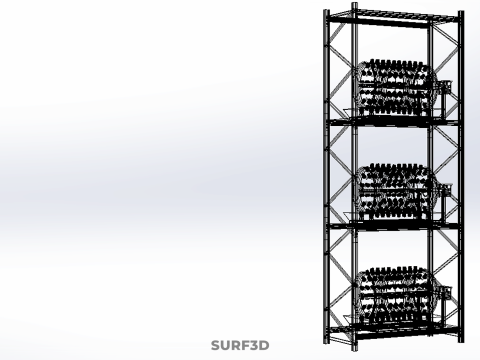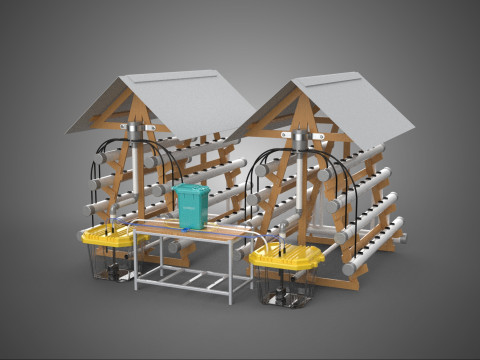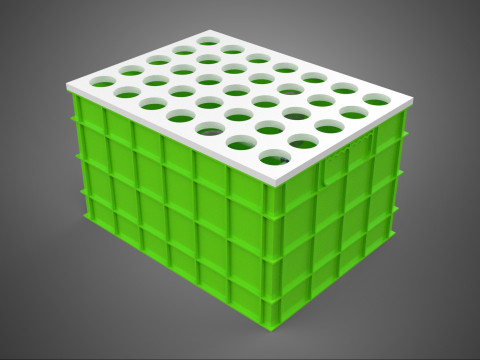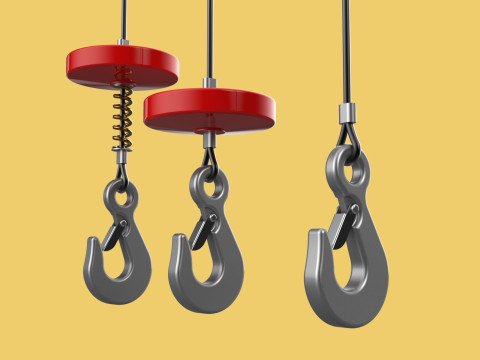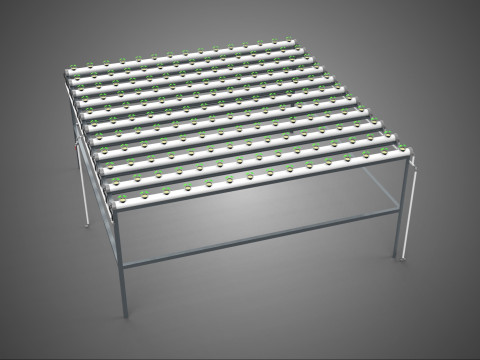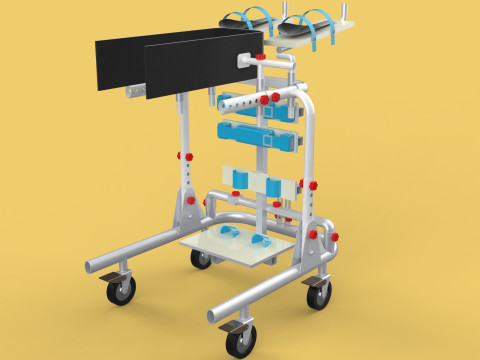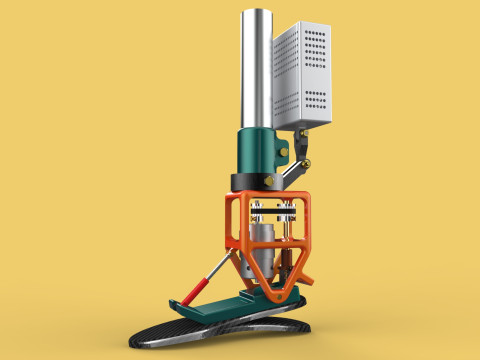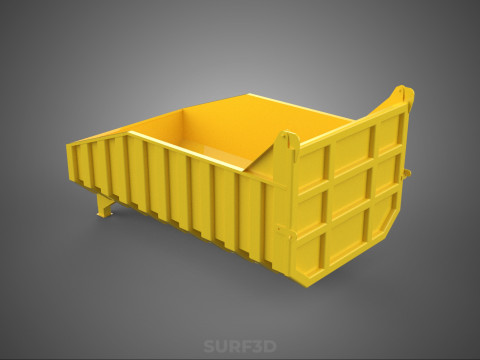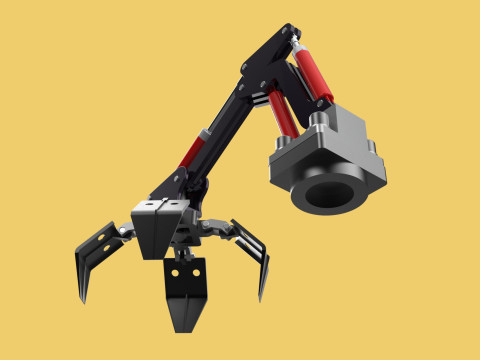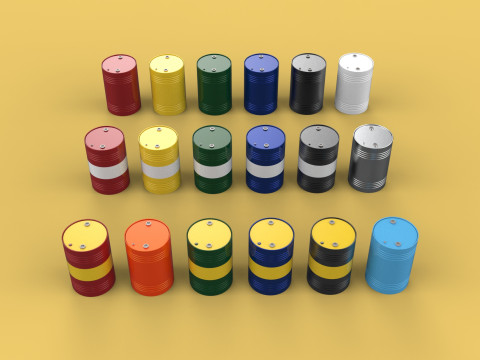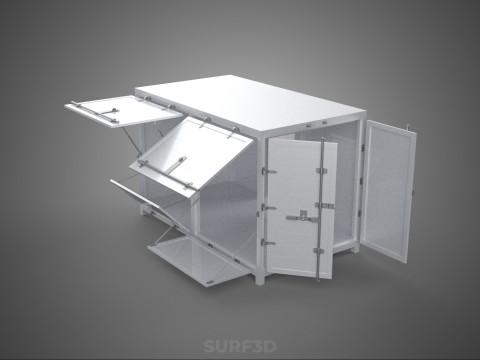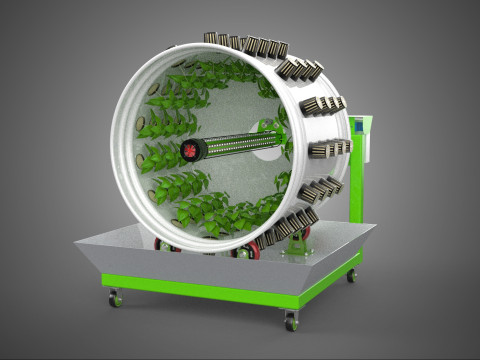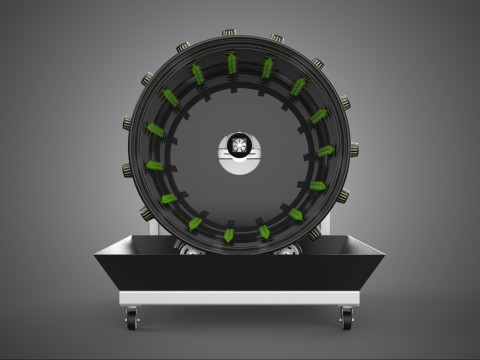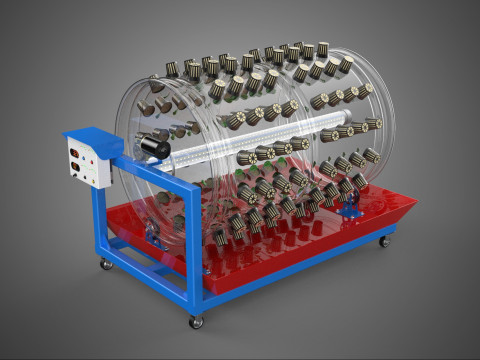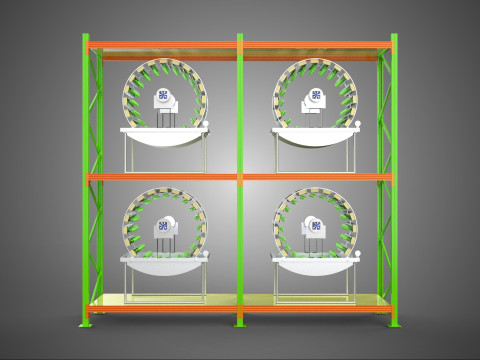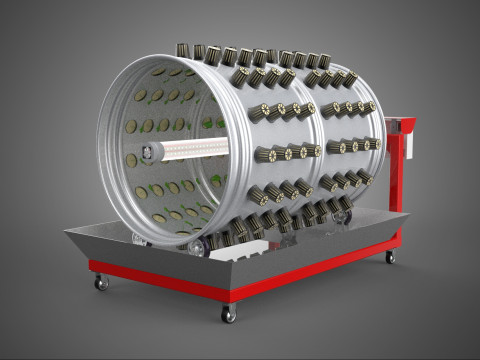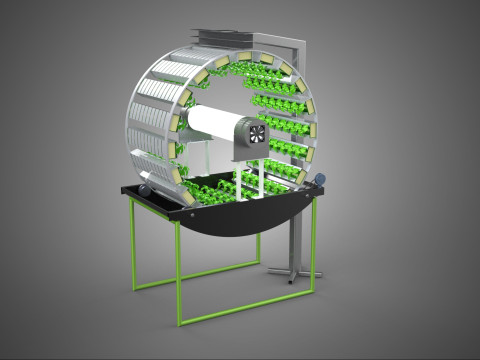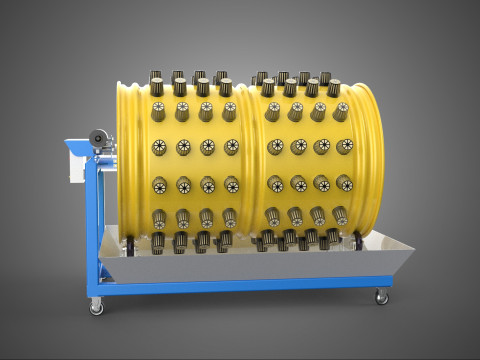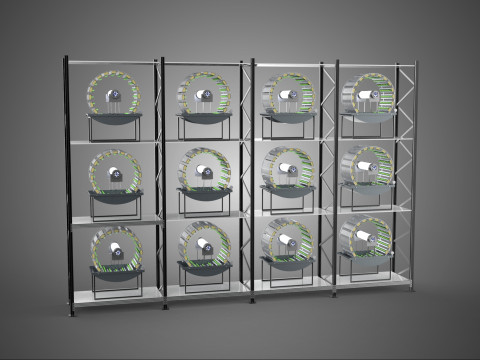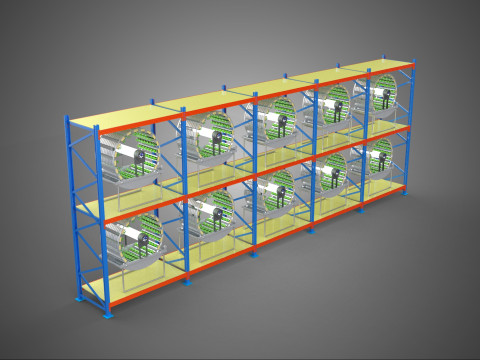GESTAPELDE VERTICALE TUINTORENFRAME ROTERENDE HYDROPONIC PLANTENBOERDERIJ 3D Model
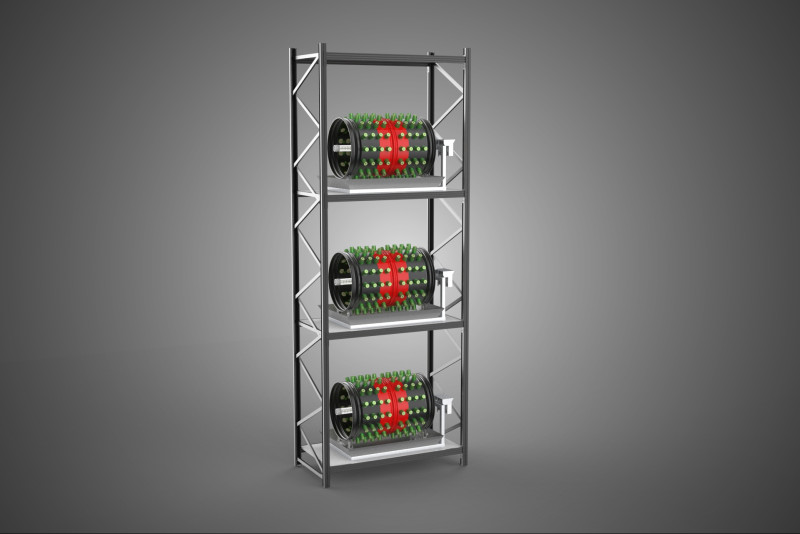
- Mogelijke formaten: Rhinoceros (.3dm) 14.58 MB3D Studio (.3ds) 41.15 MBBlender3D (.blend) 166.82 MBCollada (.dae) 134.83 MBAutodesk AutoCAD (.dwg) 46.75 MBAutodesk FBX (.fbx) 223.70 MBGLB (.glb / .gltf) 56.00 MBIGES (.iges) 4.47 MBAutodesk 3DS MAX (.max) 263.46 MBWavefront OBJ (.obj) 119.07 MBACIS(.sat) 109.79 MBSketchUp (.skp) 5.42 MBSTEP (.step) 7.15 MBStereolithography (.stl) 105.13 MB
- Polygonen:11370198
- Hoekpunten:9140206
- Geanimeerd:No
- Texturen:No
- Gemanipuleerd:No
- Materialen:
- Low-poly:No
- Collectie:No
- UVW-toewijzing:No
- Plugins Gebruikt:No
- Afdruk Gereed:No
- 3D scan:No
- Volwassen:No
- PBR:No
- AI-training:No
- Geometrie:Poly NURBS
- Onverpakte UV's:Unknown
- Aantal keer bekeken:131
- Datum: 2025-10-08
- Item ID:604056
GESTAPELDE VERTICALE TUINTORENFRAME ROTERENDE HYDROPONIC PLANTENBOERDERIJ 3D Model 3dm, 3ds, blend, dae, dwg, fbx, glb, iges, max, obj, sat, skp, step, stl, Van surf3d
High-quality 3D assets at affordable prices — trusted by designers, engineers, and creators worldwide. Made with care to be versatile, accessible, and ready for your pipeline.
Included File Formats
This model is provided in 14 widely supported formats, ensuring maximum compatibility:
• - FBX (.fbx) – Standard format for most 3D software and pipelines
• - OBJ + MTL (.obj, .mtl) – Wavefront format, widely used and compatible
• - STL (.stl) – Exported mesh geometry; may be suitable for 3D printing with adjustments
• - STEP (.step, .stp) – CAD format using NURBS surfaces
• - IGES (.iges, .igs) – Common format for CAD/CAM and engineering workflows (NURBS)
• - SAT (.sat) – ACIS solid model format (NURBS)
• - DAE (.dae) – Collada format for 3D applications and animations
• - glTF (.glb) – Modern, lightweight format for web, AR, and real-time engines
• - 3DS (.3ds) – Legacy format with broad software support
• - 3ds Max (.max) – Provided for 3ds Max users
• - Blender (.blend) – Provided for Blender users
• - SketchUp (.skp) – Compatible with all SketchUp versions
• - AutoCAD (.dwg) – Suitable for technical and architectural workflows
• - Rhino (.3dm) – Provided for Rhino users
Model Info
• - All files are checked and tested for integrity and correct content
• - Geometry uses real-world scale; model resolution varies depending on the product (high or low poly)
• • - Scene setup and mesh structure may vary depending on model complexity
• - Rendered using Luxion KeyShot
• - Affordable price with professional detailing
Buy with confidence. Quality and compatibility guaranteed.
If you have any questions about the file formats, feel free to send us a message — we're happy to assist you!
Sincerely,
SURF3D
Trusted source for professional and affordable 3D models.
More Information About 3D Model :
A Stacked Vertical Garden Tower Frame Rotary Hydroponic Plant Farm represents a highly advanced and space-efficient system within the domain of Controlled Environment Agriculture (CEA). This innovative design integrates vertical stacking, rotational movement, and soil-less cultivation to maximize plant growth and resource utilization.
The core structure is a vertical tower frame, typically engineered from durable, non-corrosive materials like aluminum, steel, or high-grade plastics. This frame supports multiple tiers or shelves arranged radially around a central vertical axis. Each tier is designed to hold multiple plant sites or grow trays. The "stacked" aspect refers to these multiple levels, significantly increasing the grow area within a small horizontal footprint.
A defining characteristic is the rotary system. A motorized mechanism, often employing gears or a chain drive, slowly rotates the entire stack of plant trays or individual shelves around the central axis. The rotational speed is typically very low, measured in revolutions per hour or even per day, designed to provide plants with uniform exposure to light sources (which may be stationary in the center or peripherally located) and to optimize air circulation around the plants. This continuous or intermittent motion mitigates potential shadowing and ensures equitable distribution of resources like light and airflow to all plants, regardless of their position on the tower.
Integrated within this rotating tower is a sophisticated hydroponic system. Various hydroponic techniques can be employed, including Nutrient Film Technique (NFT), Deep Water Culture (DWC), drip irrigation, or aeroponics, tailored to specific plant requirements. A nutrient reservoir, usually located at the base of the tower, stores a precisely balanced solution of water and dissolved mineral nutrients. A pump circulates this solution to the plant roots via a network of pipes and emitters, with excess solution typically draining back to the reservoir, enabling efficient recycling and minimal water waste. This soil-less method eliminates soil-borne pests and diseases, allows for precise nutrient delivery, and supports accelerated growth rates.
The amalgamation of these technologies yields several significant advantages:
* **Space Efficiency:** Vertical stacking and a compact footprint make it ideal for urban environments or areas with limited land availability, maximizing crop yield per square meter.
* **Optimized Light Distribution:** The rotary movement ensures that all plants receive consistent and uniform light exposure, whether from natural sunlight directed via reflectors or from artificial grow lights (LEDs often preferred for energy efficiency and spectrum control). This can lead to more consistent plant growth and reduced energy consumption for lighting by ensuring even photon distribution.
* **Resource Conservation:** Hydroponics inherently uses significantly less water than traditional agriculture due to the recirculating system. Nutrient use is also highly controlled, reducing waste and environmental runoff.
* **Controlled Environment:** The enclosed nature of such a system allows for precise regulation of environmental parameters such as temperature, humidity, carbon dioxide levels, and pest control, leading to optimal growth conditions and higher yields.
* **Automation and Labor Reduction:** Many aspects, including nutrient delivery, pH monitoring, and rotation, can be automated, reducing manual labor requirements and ensuring consistent operational parameters.
* **Year-Round Production:** Unaffected by external weather conditions, these systems can produce crops continuously throughout the year.
Stacked Vertical Garden Tower Frame Rotary Hydroponic Plant Farms are finding increasing application in urban agriculture, research facilities, educational institutions, and commercial food production. They are particularly well-suited for growing leafy greens, herbs, strawberries, and other small-to-medium sized plants, contributing to local food security, reducing food miles, and advancing sustainable agricultural practices.
This system represents a cutting-edge approach to sustainable and efficient food production, addressing challenges of land scarcity, water conservation, and climate variability. Its integrated design offers a compelling model for future agricultural endeavors.
KEYWORDS: Vertical farming, Hydroponics, Controlled Environment Agriculture (CEA), Rotary garden, Plant tower, Urban agriculture, Sustainable farming, Soil-less cultivation, Automated farming, Resource efficiency, LED grow lights, Nutrient Film Technique (NFT), Deep Water Culture (DWC), Aeroponics, Food security, Indoor farming, Climate control, Water conservation, Energy efficiency, Crop yield, Plant growth, Rotational system, Space optimization, Agricultural innovation, Smart farming, Precision agriculture, Nutrient delivery, Year-round production, Food miles, Modular farming
Meer formaten nodig?
Als u een ander formaat nodig heeft, open dan alstublieft een nieuwe Support Ticket en vraag om een ander formaat. Wij kunnen uw 3D modelen van vorm veranderen naar: .stl, .c4d, .obj, .fbx, .ma/.mb, .3ds, .3dm, .dxf/.dwg, .max. .blend, .skp, .glb. We converteren geen 3D scènes en formaten zoals .step, .iges, .stp, .sldprt.!Gebruiksinformatie
GESTAPELDE VERTICALE TUINTORENFRAME ROTERENDE HYDROPONIC PLANTENBOERDERIJ - U kunt dit royaltyvrije 3D model gebruiken voor zowel persoonlijke als commerciële doeleinden, in overeenstemming met de Basislicentie of Uitgebreide Licentie.De Basislicentie dekt de meeste standaard use cases, waaronder digitale advertenties, ontwerp- en visualisatieprojecten, zakelijke socialmedia-accounts, native apps, webapps, videogames en fysieke of digitale eindproducten (zowel gratis als verkocht).
De Uitgebreide Licentie omvat alle rechten die worden verleend onder de Basislicentie, zonder gebruiksbeperkingen, en staat toe dat het 3D model wordt gebruikt in onbeperkte commerciële projecten onder royaltyvrije voorwaarden.
Lees meer


 English
English Español
Español Deutsch
Deutsch 日本語
日本語 Polska
Polska Français
Français 中國
中國 한국의
한국의 Українська
Українська Italiano
Italiano Nederlands
Nederlands Türkçe
Türkçe Português
Português Bahasa Indonesia
Bahasa Indonesia Русский
Русский हिंदी
हिंदी